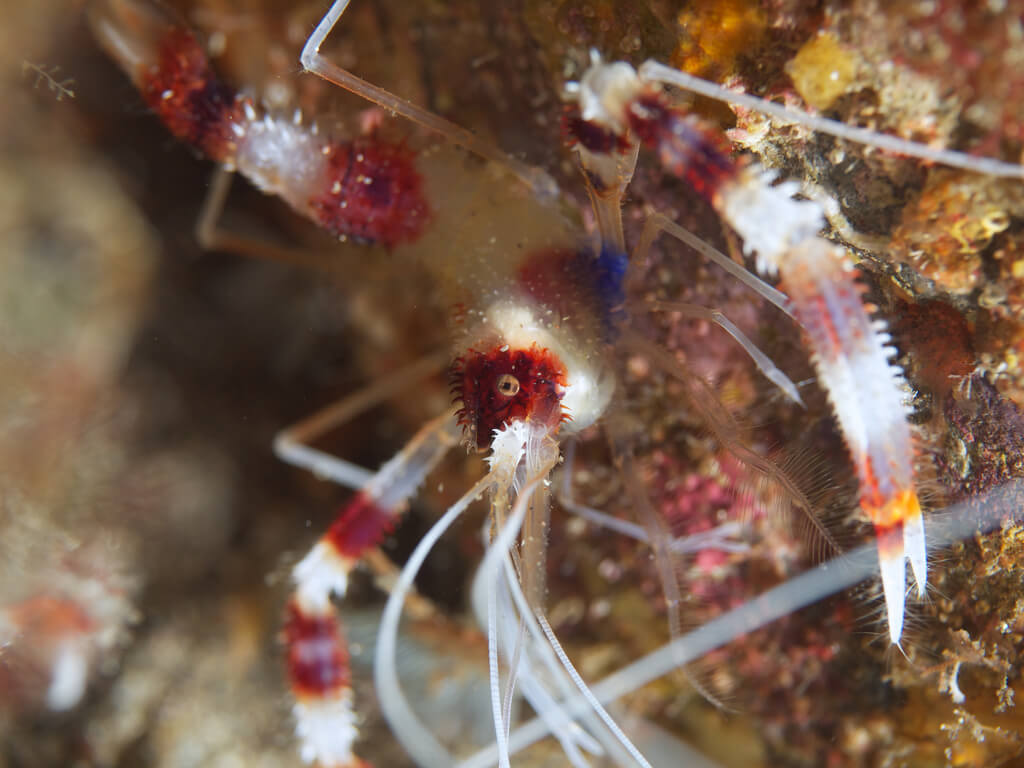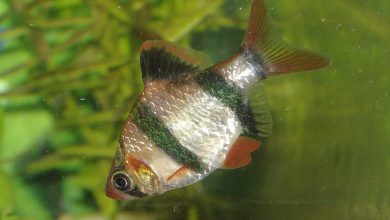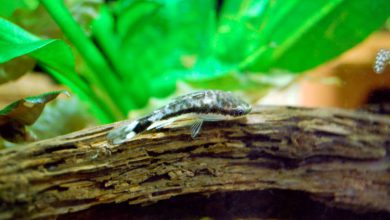Coral Banded Shrimp Care Sheet

The coral banded shrimp is a beautiful decapod crustacean that makes for a great addition to any marine aquarium.
Many aquarists seek out this boxing shrimp because of its color and personality, which can add a lot of interest to your tank. It is also reef safe, which means it can be added to your aquarium without the fear of it tearing up the corals.
Coral banded shrimp are quite easy to take care of, which is another reason why people like to add them to their aquariums. With the right amount of care and attention, this boxing shrimp can flourish in your marine aquarium.
It is important, however, to remember that these are semi-aggressive creatures. They may not live well with all types of fish and crustaceans. You will have to check the compatibility of the other members of your aquarium with this shrimp before leaving them in the same space.
If you are looking to buy this species but are confused about how to take care of it, read this comprehensive care sheet that will walk you though all the basics.
Habitat

The coral banded shrimp’s natural habitat is the oceans of Indonesia but it survives well in captivity. There are very specific arrangements that need to be made before you buy a coral banded shrimp.
To get a better understanding about what works for these crustaceans, here is an in-depth look into the right size of tank, the temperature and composition of the water that the coral banded shrimp will be in, and the ideal equipment and decorations.
Tank Size
Coral banded shrimps grow to no more than 3 inches long. This means that while you won’t need an enormous 100 gallon tank to keep your shrimps happy, they also don’t tend to do well in tiny 10 gallon tanks either.
The ideal size of tank for the coral banded shrimp is generally agreed to be anything above 30 gallons. This will give your shrimp enough space to find its little nook away from the other fish in your aquarium.
Water Temperature
The coral banded shrimp can only survive in marine aquariums. The ideal water temperature is between 72°F and 80°F (approximately 24°C to 27°C). Anything outside this range can be detrimental to the growth and survival of your shrimp.
Water Composition
Along with the temperature of the water, its composition is just as important (if not moreso). The ideal pH should be kept within the 8.0 and 8.4 range. In addition to this, the ideal specific gravity should be between 1.022 – 1.025 and the carbonate hardness of the water should be kept between 8 and 12 dKH.
As is the case with most other invertebrates, this type of shrimp cannot function in situations where the nitrate levels or the copper levels are too high. There is also a need to maintain appropriate iodine levels in your aquarium, which is essential for proper molting.
Equipment and Plants
As is the case with all aquariums, you will need to have a good quality filtration system installed in your tank.
The substrate can be gravel, sand or small rocks. In addition to this, you should make sure there are enough nooks and crannies where your coral banded shrimp can hide away from view.
Coral banded shrimps are compatible with reefs in most cases and considered reef safe.
There is a degree of disagreement between people on this point. While some maintain that their coral banded shrimp caused no harm to the aquarium reef, others have reported noticing holes in the reef and attributed it to the coral banded shrimp in the aquarium.
If the food supply for the shrimp is falling short, they have been known to steal food that is meant for anemones and corals.
Behavior of the Coral Banded Shrimp


The coral banded shrimp is a relatively peaceful creature in most situations but it is placed under the semi-aggressive category.
They are especially territorial and aggressive when it comes to other types of shrimp. Their aggression towards other shrimp can be such a problem that even other coral banded shrimp are not safe.
The more dominant shrimp can easily harm and eat the other weaker or slower shrimps. The only exception to this is any mated pair of coral banded shrimps, in which case they may be able to survive together.
The root of the shrimp’s aggression is its diet. It often ambushes slow-moving creatures and steals their food. If the coral banded shrimp is fed well, it is far less likely to harm other tank mates.
Integration into the Tank
If you are looking to add coral banded shrimp to your marine aquarium, you will have to make sure that the crustacean is given enough time to acclimatize slowly in the aquarium’s water.
The most popular method to adopt when you are considering acclimatization for your shrimp is the slow drip method. This means transferring the coral banded shrimp into a separate container along with the water that they came with.
Start a drip from the tank of your aquarium to this container till the quantity doubles.
Discard half of the water and start again till the volume doubles again.
Finally most of the water in the container would be the water from the aquarium, at which point it is safe to transfer the coral banded shrimp to the main tank.
The process should be slow so that you can avoid any shock to the crustacean and may take several hours to accomplish.
Best Tank Mates


Even though it was mentioned earlier that coral banded shrimp could be a little aggressive with their own kind, they tend to work well with most peaceful varieties of marine fish. To avoid the risk of fighting, try to ensure that your fish are larger than your shrimp and don’t harbour any aggressive territorial traits.
Fish That Don’t Work Well


The coral banded shrimp is very small and not very powerful, which makes it an easy target for larger or more aggressive fish.
In addition to this, coral banded shrimp should not even be kept with other types of shrimp because of their own aggression. If given a chance, the coral banded shrimp will prey on any other creature that is smaller or weaker than it.
For best results, it is recommended that you only keep one coral banded shrimp in your aquarium. This will help to avoid the loss of other shrimps (even coral banded).
Some examples of tank mates that don’t work well with coral banded shrimps include:
- Lionfish
- Snappers
- Groupers
- Triggers
- Eels
- Other types of shrimp
- Any other predatory fish that is larger than the coral banded shrimp
Feeding
The coral banded shrimp is not a very picky eater. Traditionally a scavenger, this crustacean is an omnivore that can consume a wide variety of foods. T
he most important thing is placing the food near to your shrimp. If you fail to do so then any fish that is faster can grab it. In such case – if the shrimp is left unfed – it will try to look for food from other live sources present in the aquarium.
The coral banded shrimp is capable of eating live snails, hermit crabs or other shrimp present in the water.
You can feed your shrimp any type of frozen food, small bits of meat, specially made flake foods or shrimp pellets.
If you are putting shrimp pellets in the aquarium for your coral banded shrimp, make sure that there is at least one complete pellet per shrimp. This should prevent them from stealing food from other members of your aquarium.
Breeding
There are a number of indications as to the sex of coral banded shrimps. Firstly, the males tend to be a little smaller than the females. In addition to this, females have a blue or green discoloration in the region where the legs meet the torso – the ovaries. This coloring is missing in the males.
While you may find yourself enamored by the idea of breeding your own coral banded shrimp, it is easier said than done. Firstly, it is important that you ensure that you have a pair from different sexes. If you leave two shrimp of the same sex in the tank, the stronger one will eat the weaker one in all likelihood.
Assuming you have successfully purchased a pair, after mating female coral shrimps will lay eggs in multiple batches around the aquarium.
The problem is with the size of these eggs. They are so small that they can easily be sucked into the filtration system or be eaten up by other fish in the tank. For this reason, the breeding is usually left to professionals.
Common Health Problems
Coral banded shrimp are hardy creatures that don’t usually suffer from the common fish diseases.
The main reason why people lose their shrimp is toxic shock because of warped levels of salinity or pH in their aquarium.
Coral banded shrimps are also very sensitive to high levels of nitrates or copper.
It is important that you check all these levels on a regular basis to ensure that the shrimp lives out its entire 2-3 year lifespan.
The other problem that can affect coral banded shrimps is a lack of food. Keep the shrimp’s relatively slow speed in mind as you ensure that the food you are placing in the tank reaches it.
Final Thoughts
The coral banded shrimp is an interesting addition to any marine aquarium. However, before you go out and buy yourself this shrimp, keep its temperament, dietary and habitat-related needs in mind.
As it is known to be aggressive towards other shrimps, keep only one coral banded shrimp in your tank. Check the water composition regularly and feed the shrimp a variety of food.
These factors will ensure that your shrimp stays happy, healthy and active!
Photos c/o bocagrandelasvegas & petturik & prilfish 


